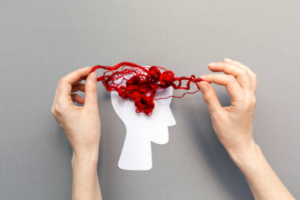

Rewards of Purchase


Beauty marketing is an intricate dance of artistry and psychology. As consumers, we’re drawn into a world where products promise to enhance our features, boost our confidence, and offer a slice of the glamorous lives we see in advertisements. Yet, behind the glossy images and enticing promises lies a profound understanding of human psychology that drives our desires and decisions. In this exploration, we’ll delve into the captivating realm of beauty marketing, uncover the psychological strategies at play, and gain insights into the intricate dance between advertisers and consumers.
In the world of beauty marketing, visuals are the bridge between aspiration and reality. The images and videos that adorn advertisements and promotional materials play a pivotal role in shaping consumer perceptions, desires, and self-identity. The power of visuals lies in their ability to weave a narrative that transcends mere products, inviting consumers into a realm of aspiration, transformation, and the promise of a better self.
At the heart of beauty marketing’s visual allure is the concept of the “ideal self.” This ideal self represents an enhanced version of who we are – a confident, glamorous, and empowered individual who effortlessly embodies beauty and self-assurance. The images presented in beauty campaigns showcase this ideal self, inviting consumers to envision themselves living out this aspirational identity.
The models and influencers featured in these visuals become avatars for consumers to project their desires onto. The radiant skin, luscious hair, and flawless makeup become symbols of possibility, encouraging consumers to believe that by using the advertised products, they too can embody this aspirational identity.
Visuals are a conduit for emotions, transcending language and cultural barriers to tap into universal feelings. Beauty marketing capitalizes on this by using visuals to evoke emotions that resonate deeply with consumers. A radiant smile on a model’s face can evoke feelings of happiness and confidence, while images of a serene spa setting can trigger associations of relaxation and self-care.
Beauty marketing visuals often tell stories of transformation – a journey from ordinary to extraordinary, from insecurity to confidence. These narratives are reinforced by before-and-after images, showcasing the tangible results that the advertised products promise to deliver. This narrative structure triggers a sense of hope and optimism, igniting the belief that by using the product, consumers can undergo their own transformative journey.
Advertisers excel at using visuals to depict this narrative. Whether it’s a skincare product seemingly erasing years of aging or a makeup product magically enhancing features, the power of visuals lies in their ability to depict these transformations in a visually compelling and emotionally resonant manner.
The Halo Effect is a cognitive bias that occurs when we unconsciously attribute positive qualities to an individual based on their perceived physical attractiveness or a single positive trait. When we perceive someone as physically appealing, our brain’s tendency to simplify complex judgments leads us to assume they possess other favorable attributes, such as kindness, intelligence, and competence.
In beauty marketing, the Halo Effect is harnessed by presenting models with aesthetically pleasing features. By showcasing them using the product, brands leverage this bias to subtly suggest that using their products will not only enhance physical appearance but also cultivate positive virtues within the consumer.
Advertisers capitalize on these cultural associations by seamlessly connecting beauty with virtues such as confidence, happiness, and success. When consumers see a radiant and attractive model confidently using a product, the Halo Effect reinforces the notion that using the product can lead to a similar positive transformation in their own lives.
Social proof is a powerful psychological trigger that taps into our inclination to conform to the actions and choices of others. Beauty marketing often employs this strategy by showcasing testimonials, before-and-after photos, and user-generated content. When consumers see others achieving positive results with a product, they’re more likely to believe in its efficacy and feel compelled to experience those results themselves.
Furthermore, the fear of missing out (FOMO) is a key driver of consumer behavior. Limited edition products, flash sales, and exclusive offers create a sense of urgency that prompts consumers to act quickly, fearing they’ll miss out on something special. This urgency is amplified by the fear of being left behind or not being part of a trend, fostering a swift and often impulsive decision-making process.
The act of purchasing is more than a transaction; it’s a journey that triggers a series of psychological responses, among which the release of dopamine is a central player. The psychology of rewards, pleasure, and anticipation plays a significant role in beauty marketing, as advertisers strategically harness the dopamine rush to make the purchasing experience not only satisfying but also addictive.
Dopamine is often referred to as the brain’s “feel-good” neurotransmitter. It’s associated with pleasure, reward, motivation, and reinforcement learning. When we engage in activities that bring pleasure or fulfillment, our brain releases dopamine, creating a positive emotional response that reinforces the behavior. This process forms the foundation of the dopamine rush associated with shopping and, more specifically, beauty product purchases.
Beauty marketing strategies are designed to create anticipation and excitement around products. From teaser campaigns to sneak peeks, advertisers leverage the anticipation of a new product launch to stimulate dopamine release. The sense of novelty and the idea of obtaining something desirable trigger a surge of dopamine, making consumers eager to experience the rewards of their purchase.
Limited-edition releases and exclusive offers also contribute to the dopamine rush. The idea that the product is available for a limited time or in limited quantities adds a sense of urgency, heightening the anticipation and excitement. Consumers experience a rush of dopamine as they contemplate the idea of obtaining a unique or scarce item.
The moment of purchase is a culmination of anticipation, desire, and reward. When a consumer clicks the “buy” button or makes their way to the checkout counter, their brain experiences a surge of dopamine, creating a pleasurable sensation. This feeling is associated with the achievement of a goal, and it reinforces the act of purchasing as a rewarding experience.
The dopamine rush extends beyond the moment of purchase. It contributes to the emotional attachment consumers develop towards the products they buy. This emotional attachment is essential for building brand loyalty and encouraging repeat purchases. Consumers associate the positive emotional experience of the dopamine rush with the brand and its products, making them more likely to seek out those products in the future.
Brands further amplify this effect through loyalty programs and rewards. Accumulating points, earning discounts, or unlocking exclusive benefits create a sense of accomplishment and excitement that triggers dopamine release. This reinforcement strengthens the connection between the consumer and the brand, fostering a cycle of repeated engagement and purchase.
While the dopamine rush associated with shopping can be pleasurable and exciting, it can also lead to impulsive buying behavior and, in some cases, addiction. Impulse buying occurs when the dopamine rush from purchasing overrides rational decision-making. Consumers may make purchases they later regret, driven by the temporary thrill of acquisition.
In extreme cases, individuals may develop shopping addiction, where the pursuit of the dopamine rush becomes a compulsion that negatively impacts their financial well-being and emotional health.
The rise of influencer culture has transformed the beauty industry by offering a more personal, relatable connection between brands and consumers. Influencers present a bridge between the corporate world and the everyday consumer, creating a sense of trust and authenticity. When an influencer shares their experience with a product, it feels like a recommendation from a friend, enhancing the feeling of connection and reliability.
Advertisers leverage this by collaborating with influencers whose values align with the brand’s ethos, creating a seamless integration of the product into the influencer’s life. This fosters a sense of authenticity that resonates with consumers who seek genuine recommendations and reviews.
Beauty marketing often goes beyond promoting products; it tells stories that evoke emotions and resonate with consumers’ identities. By creating narratives that align with consumers’ values, aspirations, and self-perception, advertisers tap into the psychology of identity and belonging.
For example, a skincare brand might craft a narrative around self-care and empowerment, aligning with consumers who value wellness and self-expression. By fostering an emotional connection, the brand becomes more than a product – it becomes a symbol of shared values and experiences.
The world of beauty marketing is a captivating labyrinth, where emotions, aspirations, and psychology intertwine to create a complex landscape of consumer behavior. As we journey through this maze, it becomes clear that understanding the strategies and psychological triggers employed by advertisers is essential for making informed and empowered choices in a beauty-saturated world.
The power of understanding lies in its potential for empowerment. Armed with knowledge about the psychological tactics at play, consumers can engage with beauty marketing in a more conscious and discerning manner. Rather than being swayed by the superficial allure of glossy images and enticing promises, consumers can navigate the beauty maze with an awareness of the underlying strategies. This empowers individuals to make choices that align with their true desires, values, and well-being.
Navigating the beauty maze also involves cultivating emotional resilience. The industry thrives on creating desires and fostering a sense of lack that can lead to impulsive buying. By recognizing the emotional triggers and societal pressures at play, individuals can build emotional resilience, resisting the urge to make purchases driven solely by temporary impulses.
Sustainable Shades For many DIY enthusiasts and design aficionados, a fresh coat of paint is…
Cruelty-Free Solutions for a Healthier You Chronic inflammation can be a relentless foe, disrupting our…
Unleashing Your Brain's Potential In today's fast-paced world, maintaining sharp mental focus and cognitive agility…
Exploring DIY Organic Makeup Fixers For the eco-conscious beauty enthusiast, the quest for flawless makeup…
A Sensitive Exploration The clean beauty movement has taken the beauty world by storm. Consumers…
Taming the Mane Frizz – the bane of smooth hair dreams. It can transform a…
This website uses cookies.